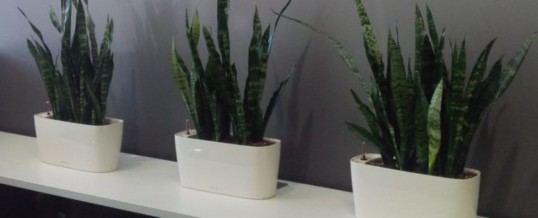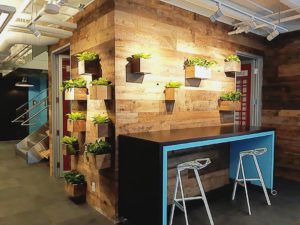
Feeling that there is no end in sight to winter this year? Start your gardening now, indoors. Your indoor tropical plants have had a long winter too.. the short daylight hours and low humidity will have taken a toll. April is a great time to give your tropical house or office plants a spring make-over. Start by removing any dead leaves from the plant or on the soil. Dead plant material can attract pests. Inspect the plants for signs of insects. Look for tiny grayish webs on the leaves (spider mites), white cotton-like spots (mealy bug) or hard brown raised spots that you can scrape off with your finger (scale insect). These are the three most common insects to affect indoor tropical plants. Simply removing the insects by wiping with a damp cloth is very effective. Do this regularly to discourage the insects. Not only will regular cleaning of the leaves this improve the appearance of the plant, but will also remove dust which can interfere with the plant’s normal transpiration and respiration (‘breathing’) and photosynthesis.
Prune the plants to give them a pleasing shape. Using good quality, sharp pruners or scissors, cut off any long, straggling, or damaged stems. Remove any leaves with brown spots or tips. Most plants will grow new shoots from just below the cut. Regular pruning will encourage new growth and keep the plants looking full and bushy.
Start fertilizing in February and fertilize once per month until November. Use a high quality complete fertilizer designed for indoor tropical plants. The ratio of nitrogen to phosporus to potassium should be 20-20-20 and it should contain the necessary micronutrients. A water soluble fertilizer is recommended. Add it to the water according to the manufacturer’s directions, mix well and then water the plants as usual
Should you repot your plants? We are frequently asked this question. In most cases, the answer is usually no. In fact, putting your plants into a much larger pot can actually be detrimental. Our clients are surprised to learn that most plants like to have crowded roots. The roots give off chemicals (hormones) that promote the growth and health of the surrounding roots. Adding soil to the pot periodically is preferable. Don’t put too much on top though; this may interfere with the amount of oxygen that gets through to the roots. If the soil level is very low, carefully lift the plant out of the pot and add some soil to the bottom of the pot, replace the plant, then put an inch of fresh soil on top. Purchase soil specifically designed for tropical plants.

.
ShareAPR
2018
